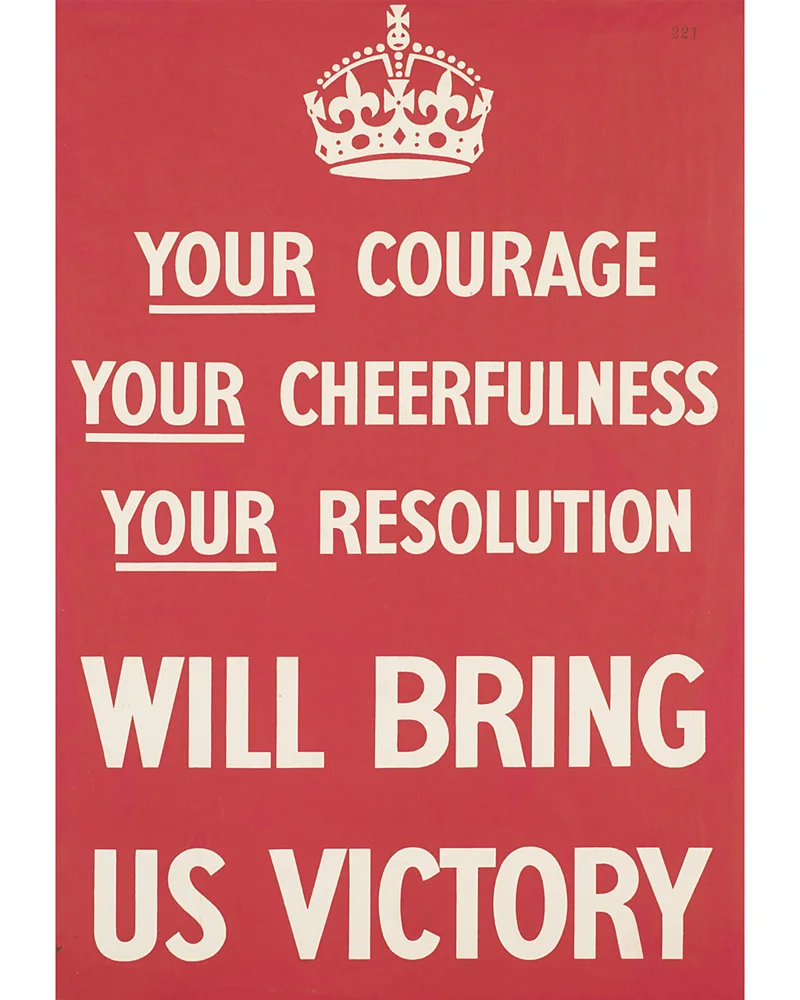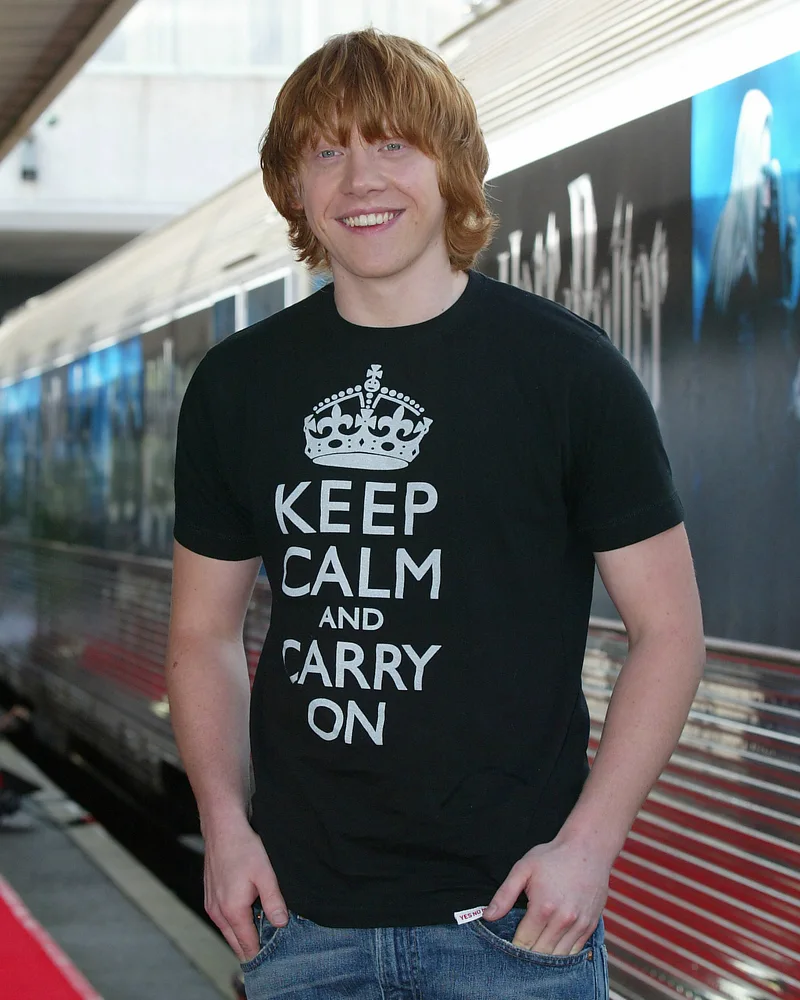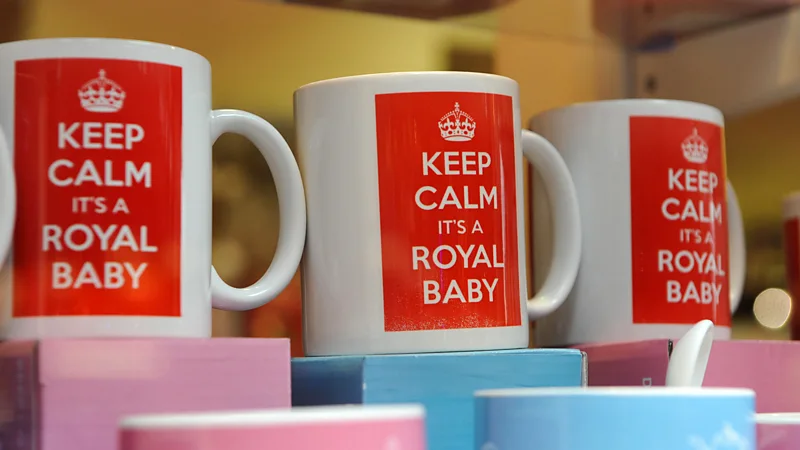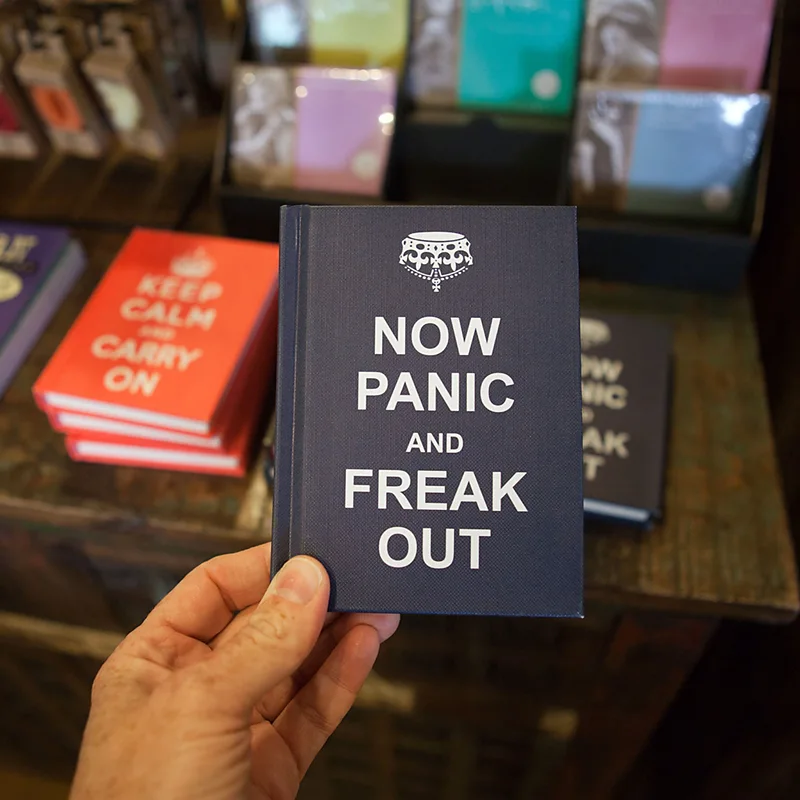In the spring of 2000, a long-forgotten British propaganda poster from the early days of World War Two was discovered in a dusty cardboard box in Barter Books, a second-hand bookshop in Alnwick, Northumberland. Simple, striking, and designed to reassure a country on the brink of conflict, the red poster bore a now-iconic slogan: Keep Calm and Carry On.
It wasn’t well-known at the time. In fact, it had never been officially issued. Commissioned by the British Ministry of Information in 1939, it was part of a trio of morale-boosting posters intended to prepare civilians for wartime hardships. The other two- Your Courage, Your Cheerfulness, Your Resolution Will Bring Us Victory and Freedom is in Peril. Defend it with All Your Might– were widely distributed. But Keep Calm and Carry On was reserved for use in the event of total societal collapse, such as might follow mass bombing raids. That moment, as it happened, never quite arrived.

According to Dr Daniel Cowling, senior historian at the National Army Museum, “The Ministry of Information expected air raids to cause chaos, even social collapse. This poster was designed to restore order in the aftermath. It leaned heavily on British stereotypes of stoicism.” Yet, despite the Blitz and immense national strain, the feared breakdown never occurred. Instead, the British public responded with what many historians now recognise as remarkable resilience.
Because of this, the Keep Calm and Carry On poster was never distributed in large numbers. About 2.5 million copies had been printed, but most were pulped to save paper for the war effort. Only a handful survived- one of them ending up in that Northumberland bookshop 60 years later.
From dusty box to design boom
Stuart and Mary Manley, who owned Barter Books, were taken by its clean design and quietly confident tone. “We decided to frame it and hang it in the shop,” Stuart Manley later recalled. “We had no idea what it would become.” At first, Mary resisted printing copies, but Stuart did so anyway- and demand soon changed her mind.
For several years, the poster’s appeal remained local. But that changed in 2005, when Guardian journalist Susie Steiner included it in an article about her favourite design items. Overnight, the poster went from charming curiosity to viral design object. “Our staff spent the next month packing posters to send around the world,” Manley said.
By 2007, sales had surpassed 50,000. By 2009, amid the global financial crisis, the phrase Keep Calm and Carry On took on new life as a symbol of perseverance during hardship. Its association with British wartime grit felt reassuring- despite the very different crisis it now spoke to. Politicians, celebrities, and the public embraced the message. Prime Minister Gordon Brown reportedly had a copy in his office. It appeared on mugs, cushions, doormats, T-shirts, and tea towels. It became shorthand for a particular kind of Britishness: resilient, composed, and quietly determined.

Professor Lucy Noakes, Rab Butler Professor of Modern History at the University of Essex, believes this resonance is no accident. “The poster encapsulates the dominant popular memory of the war: that it was Britain’s finest hour, and that people stoically ‘carried on’.” It fed into a nostalgic view of national identity- one that felt increasingly desirable in a changing, uncertain world.
Meme magic and global parody
Once the internet got involved, the slogan’s fate was sealed. The clean layout and generic phrase made it perfect for reworking. Keep Calm and Drink Tea, Keep Calm and Code On, Keep Calm and Have a Cupcake. It became a meme before memes had fully matured.

Professor Katy Parry of the University of Leeds sees this as part of its design genius. “The simplicity of the design- five bold words, a crown, a red background- is why it’s so adaptable. Red catches the eye. The font is unfussy. And because it doesn’t name a specific threat, it can be applied to anything.”
But it wasn’t all affection. The slogan has been repeatedly criticised for its associations with passive endurance, class privilege, and tone-deaf responses to real crises. Some see it as emblematic of a romanticised version of Britain that never quite existed. In a 2016 Guardian essay, Owen Hatherley called it “austerity nostalgia”, symbolising a desire for patrician authority and unquestioning deference.
“The poster isn’t just a case of the return of the repressed,” he wrote. “It’s the return of repression itself.”
Others have mocked its endless repackaging. Now Panic and Freak Out became one of the earliest parodies. Keep Calm and Carry On Drinking followed. For critics, the slogan has long since lost all meaning, diluted by novelty prints and cheap merchandise.

A timeless message- or outdated myth?
And yet, it endures. British graphic designer Jonathan Barnbrook compares its journey to that of classic artworks: “Even intense, serious images like Van Gogh’s or Munch’s The Scream are endlessly commercialised. Humans take pain and turn it into humour or play. It’s a way of processing emotion- and connecting.”
The same could be said for Keep Calm and Carry On. Dr Bex Lewis, author of Keep Calm and Carry On: The Truth Behind the Poster, suggests that the slogan now appeals to our sense of irony. Its deadpan tone fits with the humour of a generation raised on memes, while still offering a kind of nostalgic reassurance.
Professor Parry agrees. “It reflects a time when people ‘pulled together’- but in meme culture, that nostalgia is playful. It’s a form of remembering, but also a way to subvert and reframe.” She points out that protestors have used the template for entirely different messages: Keep Calm and Resist, Keep Calm and Rage On. The very familiarity of the design helps new causes gain traction.
For all the backlash, Keep Calm and Carry On remains one of the most successful design reboots of the 21st century. It’s visual minimalism with emotional weight- part wartime artefact, part pop icon. A single piece of propaganda that was never meant to be seen, now endlessly reprinted, repurposed, and reinterpreted.
In times of crisis, absurdity, or simply when a situation calls for tea and perspective, Keep Calm and Carry On still finds its place. Whether seen as nostalgic comfort or cultural cliché, it continues to resonate- quietly, confidently, and globally.

Adapted from: BBC
Also read: Cyprus’s hottest dining spots just opened summer 2025
For more videos and updates, check out our YouTube channel.


